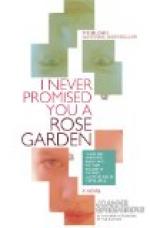The branches of the white birch being small and thickly set, they may be trimmed at will, and windows thus opened here and there without the look of artifice or stiffness.
Fences are always a moot question to the gardener, for if she has a pleasant neighbour, she does not like to raise an aggressive barrier or perhaps cut off the view, yet to a certain extent I like being walled in at least on two sides. A total lack of boundaries is too impersonal,—the eye travels on and on: there is nothing to rest it by comparison. Also, where there are no fences or hedges,—and what are hedges but living fences,—there is nothing to break the ground draught in winter and early springtime. The ocean is much more beautiful and full of meaning when brought in contact with a slender bit of coast. The moon has far more majesty when but distancing the tree-tops than when rolling apparently at random through an empty sky. A vast estate may well boast of wide sweeps and open places, but the same effect is not gained, present fashion to the contrary, by throwing down the barriers between a dozen homes occupying only half as many acres. Preferable is the cosey English walled villa of the middle class, even though it be a bit stuffy and suggestive of earwigs. The question should not be to fence or not to fence, but rather how to fence usefully and artistically, and any one who has an old stone wall, such as you have, moss grown and tumble-down, with the beginnings of wildness already achieved, has no excuse for failure. We have seen other fences here where bushes, wire, and vines all take part, but they cannot compete with an old wall.
With ferns, a topic opens as long and broad and deep as the glen below us, and of almost as uncertain climbing, for it is not so much what ferns may be dug up and, as individual plants, continue to grow in new surroundings, but how much of their haunt may be transplanted with them, that the fern may keep its characteristics. Many people do not think of this, nor would they care if reminded. Water lilies, floating among their pads in the still margin of a stream, with jewelled dragon-flies darting over, soft clouds above and the odour of wild grapes or swamp azalea wafting from the banks, are no more to them than half a dozen such lilies grown in a sunken tub or whitewashed basin in a backyard; rather are they less desirable because less easily controlled and encompassed. Such people, and they are not a few, belong to the tribe of Peter Bell, who saw nothing more in the primrose by the river’s brim than that it was a primrose, and consequently yellow. Doubtless it would have looked precisely the same to him, or even more yellow, if it had bloomed in a tin can!




